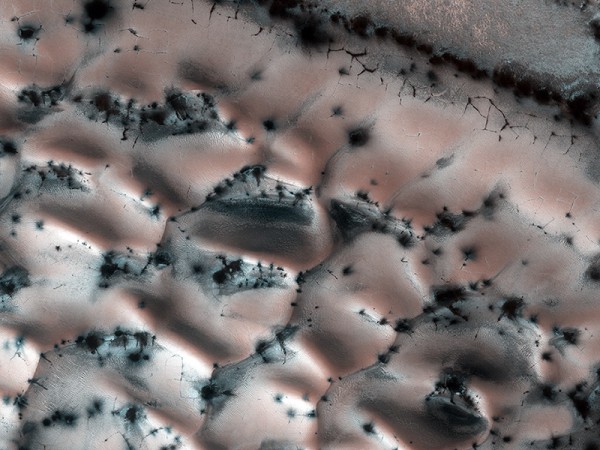By Ana Verayo, | March 27, 2017

Large Crater Northwest of Lomonosov Crater
During the evolution of Mars, water was once flowing on the surface of the dry, alien world. Recent analysis and observations from Mars orbiters and rovers revealed that the tenuous atmosphere of Mars once harbored liquid water 3.8 billion years ago to form a giant ocean and tsunamis on the surface of the Red Planet.
Like Us on Facebook
In this new study, a team of researchers now suggest that a massive ocean used to exist on the northern hemisphere of Mars around 3 billion years ago where some regions of the planet could have even experienced tsunamis. In addition, astronomers say that a massive crater created by an asteroid impact on Mars may have created these giant tsunamis.
This giant crater known as the Lomonosov Crater spans 90 miles across and is located in the northern plains of Mars. Around three billion years ago, a massive asteroid crashed on the surface of the Red Planet, into an ocean and then generated a giant tsunami reaching almost 500 feet.
Researchers say that they have mapped out lobate deposits that appear where tsunami deposits are linked to this former giant ocean on Mars. This also marks the first study to associate an impact crater to the occurrence of giant tsunamis on ancient Mars.
Scientists also reveal that the boundary between the Red Planet's southern highlands and the northern plains present some lobate flow deposits. In short, this deposit is considered as evidence of a giant tsunami wave that pushed massive waves of water into a once existing shoreline in the southern hemisphere.
According to co-author of the study, Stephen Clifford of the Lunar and Planetary Institute in Texas, these lobate deposits have propagated uphill from the northern plains which are strongly connected to a potential paleo shoreline, making for a very compelling case of an ancient ocean on Mars.
This new study is published in the Journal of Geophysical Research Planets.
-
Use of Coronavirus Pandemic Drones Raises Privacy Concerns: Drones Spread Fear, Local Officials Say

-
Coronavirus Hampers The Delivery Of Lockheed Martin F-35 Stealth Fighters For 2020

-
Instagram Speeds Up Plans to Add Account Memorialization Feature Due to COVID-19 Deaths

-
NASA: Perseverance Plans to Bring 'Mars Rock' to Earth in 2031

-
600 Dead And 3,000 In The Hospital as Iranians Believed Drinking High-Concentrations of Alcohol Can Cure The Coronavirus

-
600 Dead And 3,000 In The Hospital as Iranians Believed Drinking High-Concentrations of Alcohol Can Cure The Coronavirus

-
COVID-19: Doctors, Nurses Use Virtual Reality to Learn New Skills in Treating Coronavirus Patients







